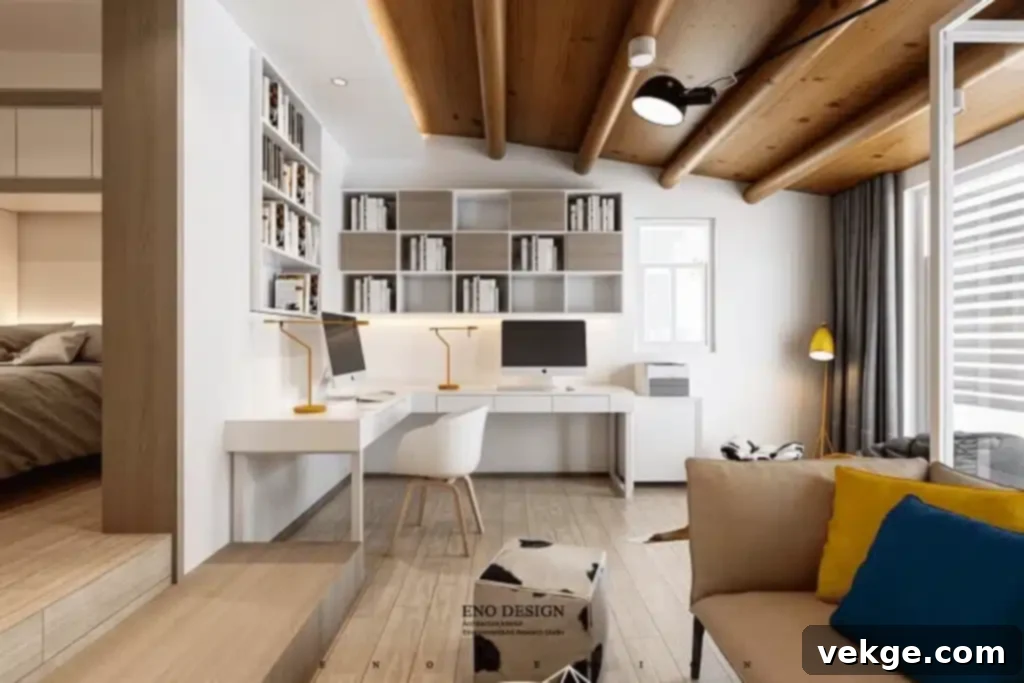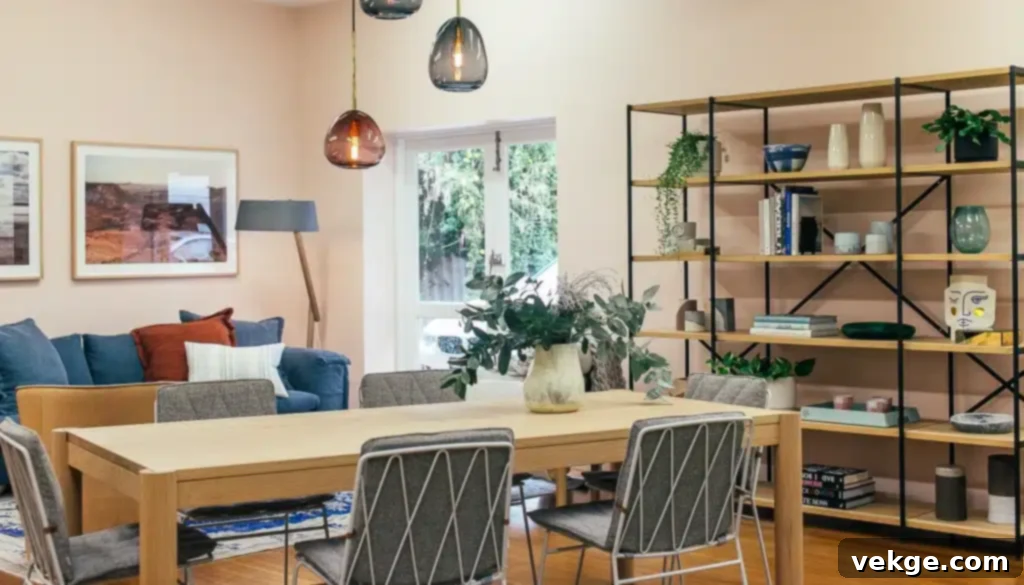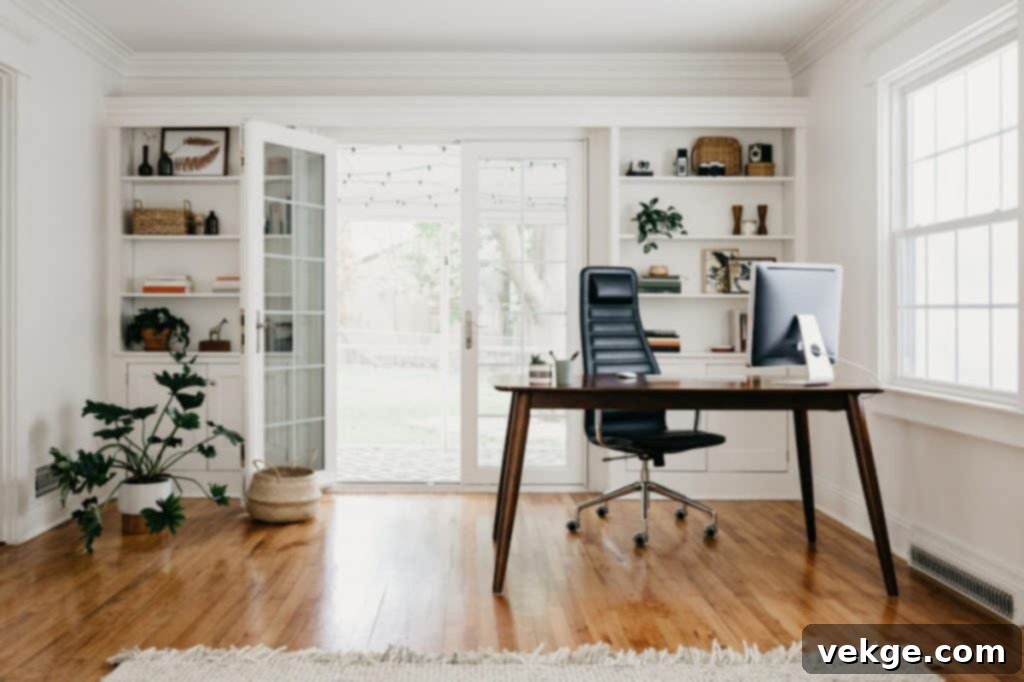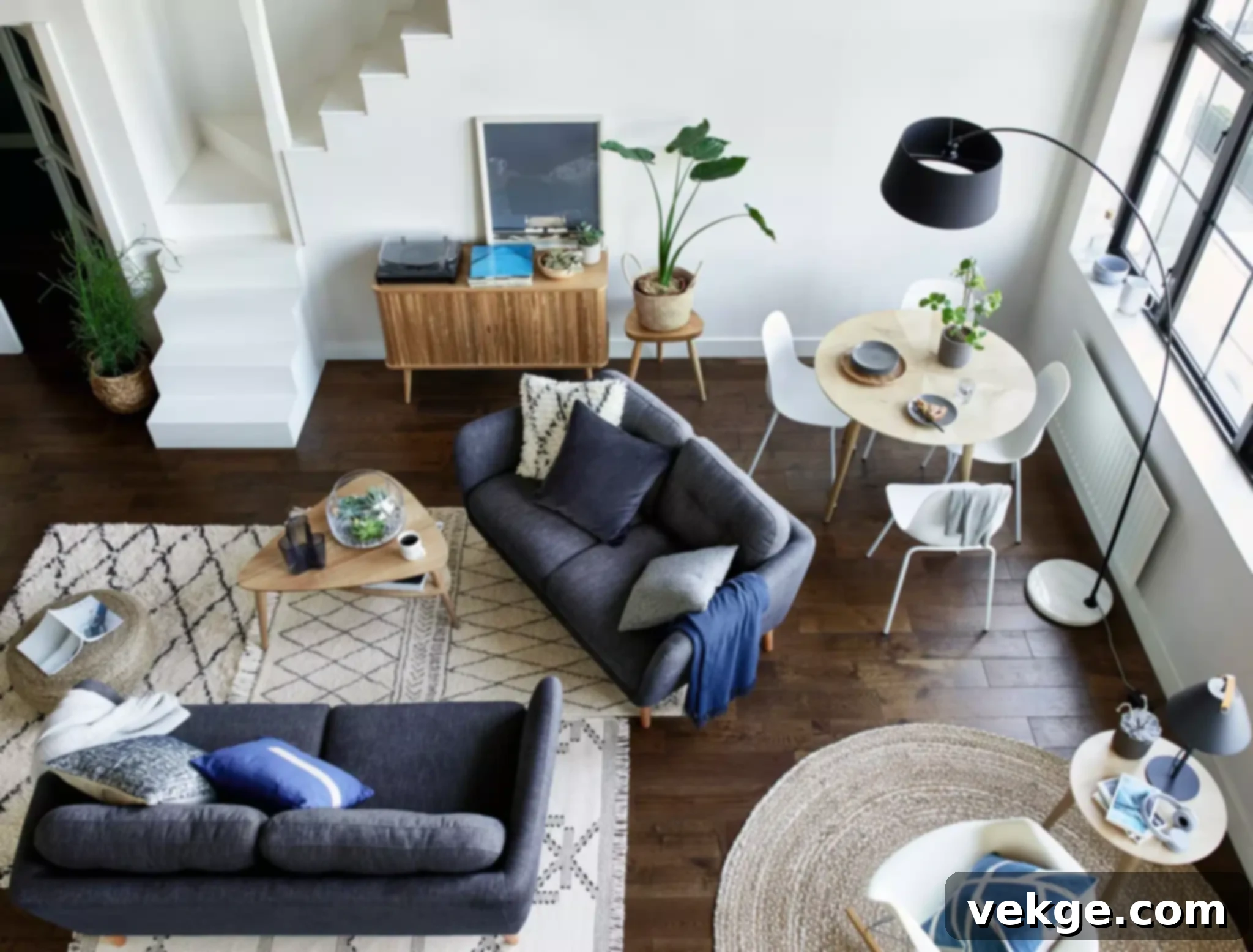Maximize Your Space: The Ultimate Guide to Creating Multi-Functional Rooms in Your Home
In an era where urban living spaces are often shrinking and family dynamics are constantly evolving, the concept of creating versatile living environments within homes has moved from a niche trend to a mainstream necessity. Homeowners are increasingly seeking innovative and practical ways to ensure every single square foot of their property works harder and smarter. This shift reflects a desire for greater efficiency, flexibility, and a deeper connection between our living spaces and our ever-changing lifestyles.
Multi-functional rooms represent a crucial evolution in contemporary home design. These dynamic spaces are expertly crafted to seamlessly adapt to a variety of needs throughout the day or week, transitioning effortlessly from a productive home office to a vibrant entertaining area, a tranquil relaxation zone, or even an impromptu guest bedroom. The goal is to cultivate a home that doesn’t just look good, but actively supports and enhances your daily routines, providing comfort, style, and unparalleled adaptability.
How to Create Multi-Functional Rooms in Your Home
Designing multi-functional rooms isn’t just about fitting more into less space; it’s about intelligent planning, thoughtful furniture selection, and creative use of decor to define zones and enhance usability. Here’s how you can transform your home into a haven of versatility and efficiency.

Furniture with a Dual Purpose
The cornerstone of any successful multi-functional room is furniture that serves more than one purpose. These versatile pieces are absolutely essential for maximizing both space and utility without compromising on aesthetic appeal or comfort. When selecting furniture, think beyond traditional uses and consider how each item can contribute to different functions.
- Sleeper Sofas and Daybeds: A classic example, a high-quality sleeper sofa can instantly transform a living room or home office into a comfortable guest room. Modern designs offer a range of styles, from chic pull-out couches to stylish daybeds that double as extra seating, ensuring your guests have a pleasant stay without dedicating an entire room.
- Extendable or Drop-Leaf Tables: These are ideal for dining areas or kitchens that occasionally need to host more people. They provide a compact solution for daily use but can expand significantly to accommodate larger gatherings or even serve as a spacious work surface for craft projects or remote work.
- Storage Ottomans and Benches: Often overlooked, these pieces offer valuable hidden storage for blankets, books, toys, or remote controls, while also serving as extra seating or a convenient footrest. Their compact nature makes them easy to move and integrate into various room configurations.
- Lift-Top Coffee Tables: Perfect for small living rooms, these tables cleverly conceal storage compartments and feature a top that lifts to a comfortable height, transforming it into an ergonomic work desk or a casual dining surface.
- Murphy Beds and Wall Beds: For the ultimate space-saving guest room solution, a Murphy bed folds neatly into a wall cabinet when not in use, completely freeing up floor space for a home office, gym, or entertainment area.
- Modular Shelving and Sectionals: These adaptable units can be reconfigured to suit different needs, whether it’s dividing a room, providing display space, or offering flexible seating arrangements.
Careful selection of these dual-purpose items ensures that your space can adapt to different situations effortlessly, all while maintaining a cohesive and inviting design.
Zoning Through Decor
Effective zoning is a critical technique for dividing a single room into multiple distinct functional areas without the need for permanent walls. This approach creates visual and psychological boundaries, allowing each zone to serve its purpose while remaining part of a larger, harmonious space.
- Area Rugs: Perhaps the most effective and easiest zoning tool, area rugs can visually delineate spaces, adding warmth, texture, and a pop of color underfoot. A large rug can anchor a living area, while a smaller one can define a cozy reading nook or a dedicated workspace within a larger room.
- Decorative Dividers: Beyond just bookcases, consider fabric panels, elegant screens (folding or sliding), or even a strategically placed tall plant or shelving unit. These elements offer varying degrees of physical separation and privacy while contributing to the room’s overall aesthetic.
- Color Schemes: Thoughtful use of color can subtly define different zones. A neutral palette in a workspace might promote focus and concentration, while warmer, more vibrant colors in a relaxation area can foster a welcoming and cozy vibe. Accent walls can also highlight specific areas.
- Furniture Arrangement: The strategic placement of furniture itself can create natural boundaries. For example, positioning a sofa to face away from a desk can immediately suggest two distinct areas.
- Lighting and Artwork: Thoughtful placement of task lighting, decorative lamps, and artwork can further reinforce the distinct function and mood of each zone.
By employing these decor elements, you can create a dynamic and organized multi-functional space that flows naturally and feels aesthetically pleasing.
Technology Integration
 Incorporating technology seamlessly into your home decor is another powerful aspect of creating a functional and stylish living environment. Smart home technology can significantly enhance the adaptability and ease of use in multi-purpose spaces.
Incorporating technology seamlessly into your home decor is another powerful aspect of creating a functional and stylish living environment. Smart home technology can significantly enhance the adaptability and ease of use in multi-purpose spaces.
- Voice-Activated Systems: Devices like smart speakers can control lighting, music, blinds, and even temperature, allowing you to instantly change the ambiance and function of a room with a simple voice command.
- Automated Lighting: Smart bulbs and switches offer unparalleled flexibility. You can program scenes for different activities—a bright, cool light for a home office, a warm, dim light for a cozy movie night, or vibrant colors for entertaining.
- Temperature Control: Smart thermostats learn your preferences and can be controlled remotely, ensuring your multi-functional room is always at the ideal temperature for its current use.
- Hidden Integration: The key to successful tech integration is discretion. Think hidden wiring, flush-mounted speakers, recessed screens or projectors, and devices that blend seamlessly with your home’s aesthetic. Smart desks with integrated wireless charging or USB ports can also reduce clutter.
- Wireless Connectivity: Ensuring robust Wi-Fi coverage throughout the space is vital for seamless operation of smart devices and for supporting remote work or streaming entertainment.
These technologies empower homeowners to adjust the setting of a room with minimal effort, ensuring it can quickly switch from a productive home office to a rejuvenating yoga studio, or an immersive cinema room.
Real-Life Examples
To truly grasp the potential of multi-functional rooms, looking at real-world applications can be incredibly inspiring:
- The Attic Transformation: Imagine an often-underutilized attic space, typically only for storage, being converted into a dynamic combination of a home office and a recreation room. With the expertise of a professional, perhaps even a Bellevue roofing contractor to ensure structural integrity and insulation, this space can feature a modular desk system that neatly tucks away, alongside a large retractable movie screen and comfortable bean bags for evening entertainment. This proves that even challenging spaces under the roof can be just as adaptive as any other part of the home.
- The Urban Apartment Dining/Workspace: In a compact downtown apartment, the dining area often needs to pull double duty. Here, a sleek dining table can be paired with ergonomic chairs that are comfortable for both meals and work. Wall-mounted monitors can be cleverly concealed behind sliding panels or within custom cabinetry when not in use, instantly transforming the professional workspace back into an inviting dining environment.
- The Living Room Guest Room: A common scenario involves a living room that occasionally hosts overnight guests. By investing in a high-quality sleeper sofa and having a portable privacy screen or heavy drapes on hand, the room can easily shift from a casual lounge to a comfortable, private guest bedroom. Storage ottomans can hold extra bedding, keeping the transition smooth and clutter-free.
- The Kids’ Playroom/Homework Zone: Children’s rooms can benefit immensely from multi-functional design. A space might feature a cozy reading nook, a dedicated desk for homework, and ample floor space for imaginative play. Smart storage solutions like cubbies, under-bed drawers, and wall-mounted shelves keep toys and school supplies organized, making transitions between activities simple.
These examples demonstrate that with the right design choices and creative vision, you can create a home that is both highly functional and beautifully integrated, maintaining high aesthetic value while serving diverse purposes.
Incorporating Flexible Lighting Solutions
 Lighting plays an absolutely pivotal role in transforming the ambiance and functionality of a room based on its intended usage. For multi-functional spaces, having flexible lighting that can easily transition from bright and energizing to soft and relaxing is paramount.
Lighting plays an absolutely pivotal role in transforming the ambiance and functionality of a room based on its intended usage. For multi-functional spaces, having flexible lighting that can easily transition from bright and energizing to soft and relaxing is paramount.
- Layered Lighting: Implement a combination of ambient (general room illumination), task (focused light for reading or working), and accent lighting (to highlight artwork or architectural features).
- Dimmable Switches: These are essential. They allow you to precisely adjust the room’s brightness, seamlessly shifting from a well-lit workspace to a subtly lit dining area or a cozy movie-watching nook.
- Adjustable Fixtures: Consider track lighting with movable heads that can direct light to specific areas, or swing-arm sconces that provide task lighting when needed and can be pushed back against the wall when not in use. Floor lamps with adjustable heights and swiveling heads also offer great flexibility.
- Smart Lighting Systems: Modern LED smart bulbs can change color temperature (from cool white for focus to warm yellow for relaxation) and brightness, often controllable via an app or voice commands.
- Maximize Natural Light: Utilize sheer curtains or blinds that allow for daylight control without completely blocking natural light, which is crucial for mood and energy.
For activities like watching movies or enjoying a romantic dinner, softer, indirect lighting, perhaps from floor lamps or wall sconces, can significantly enhance the experience, creating an intimate and inviting atmosphere.
Storage Solutions for Clutter-Free Living
Effective and ample storage solutions are non-negotiable for maintaining a clean, organized, and truly functional space, especially when one area serves multiple purposes. Minimizing clutter is key to making seamless transitions between different room uses.
- Built-In Shelves and Cabinets: Custom-built units can maximize vertical space, providing tailored storage for everything from books and decorative items to office supplies or entertainment equipment. Built-in window seats with hidden storage are also a clever solution.
- Hidden Compartments: Furniture pieces designed with hidden storage, such as beds with drawers underneath, benches with lift-top compartments, or coffee tables with concealed sections, are invaluable for stowing away items discreetly.
- Vertical Storage: Utilize tall bookcases, wall-mounted floating shelves, or pegboards in a home office zone to keep items off surfaces and organized.
- Modular Storage Systems: These versatile systems can be reconfigured as your needs change, offering flexibility for different items or activities.
- Labeled Bins and Baskets: For items that need to be easily moved or stored, decorative bins and baskets can keep things tidy and accessible. Labeling them ensures everyone knows where things belong.
For instance, having easily accessible storage in a home office area for files and stationery allows for quick clean-ups when converting the space into a comfortable lounge area for guests or a family game night.
Acoustic Considerations
Sound management is another critical, yet often overlooked, aspect of designing multi-functional rooms, particularly if the space is used for both work and leisure activities. Minimizing noise transfer and reverberation can significantly enhance comfort and concentration.
- Soft Furnishings: Incorporate materials that help dampen sound, such as thick area rugs, heavy drapes or curtains, and upholstered furniture. These absorb sound waves, reducing echo and making the room feel cozier.
- Acoustic Panels: For dedicated workspaces or entertainment zones, discreet acoustic wall panels can significantly improve sound quality within the room and prevent sound from traveling to other parts of the home.
- Room Layout: Strategically place “noisy” activities (like a television or a children’s play area) further away from “quiet” ones (like a reading nook or a home office) if possible.
- Door and Window Treatments: Consider solid-core doors and double-glazed windows to reduce external noise. Draft stoppers can also help seal gaps around doors.
- White Noise Machines: In some cases, a white noise machine can provide a subtle background hum that helps mask distracting sounds, creating a more peaceful environment for focus or sleep.
These considerations ensure that activities like important conference calls, immersive movie watching, or quiet reading can be enjoyed without disturbing others or being disturbed.
Personal Touches and Flexibility
 While functionality and efficiency are critical, personalizing your space to reflect your unique style, interests, and personality is what truly makes it feel like home and ensures it’s enjoyable and comfortable. Balance practicality with heartfelt aesthetics.
While functionality and efficiency are critical, personalizing your space to reflect your unique style, interests, and personality is what truly makes it feel like home and ensures it’s enjoyable and comfortable. Balance practicality with heartfelt aesthetics.
- Art and Decor: Choose art pieces that inspire you, or create a gallery wall that can be easily updated. Decorative objects, sculptures, or curated collections can add character and visual interest to any area.
- Family Photos and Memorabilia: Displaying cherished memories helps to create a warm and inviting atmosphere, making the multi-functional space feel deeply personal.
- Textiles: Incorporate throw blankets, decorative pillows, and curtains that add texture, color, and comfort. These are easily changeable elements that can refresh a space’s look.
- Indoor Plants: Greenery brings life, a sense of calm, and a touch of nature indoors, contributing positively to mood and air quality.
- Modular and Changeable Decor: Opt for decor items that can be easily moved, swapped out, or updated without significant investment. Slipcovers for furniture, interchangeable cushion covers, or versatile decorative trays are excellent examples.
The ability to infuse your personal style while maintaining adaptability ensures that your multi-functional room remains a true reflection of you and your family.
Seasonal Adaptations
Finally, consider how your space might evolve with the changing seasons. Adapting your decor seasonally can refresh the room’s ambiance, keep the design feeling vibrant, and highlight the space’s inherent versatility.
- Textiles: Swap out lightweight linen throw blankets and sheer curtains for spring and summer with heavier wool or faux-fur throws and rich-toned drapes for fall and winter.
- Color Palettes: Introduce brighter, cooler accent colors and patterns during warmer months, and transition to richer, warmer tones and textures as the weather cools.
- Seasonal Plants and Flowers: Bring in fresh seasonal flowers or foliage to add a touch of nature that corresponds with the time of year.
- Scents: Utilize diffusers or candles with seasonal scents—light and fresh for spring, citrusy for summer, spiced for fall, and woody for winter—to further enhance the mood.
- Lighting Adjustments: Embrace natural light more fully in the brighter seasons, and rely on warmer, cozier artificial lighting to create intimate settings during darker months.
These simple seasonal decorations can keep your multi-functional room feeling fresh, appropriate, and inviting throughout the entire year, demonstrating its enduring adaptability.
Conclusion
Creating versatile multi-functional rooms is more than just a design trend; it’s a smart, sustainable, and increasingly necessary approach to modern living. By thoughtfully focusing on elements like dual-purpose furniture, strategic zoning through decor, seamless technology integration, flexible lighting, efficient storage, acoustic considerations, personal touches, and seasonal adaptations, homeowners can craft spaces that effortlessly meet diverse needs and remain adaptable and enjoyable year-round.
Whether you’re adjusting the lighting for focused work or lively play, minimizing clutter with smart storage solutions, or personalizing the space to reflect your unique style, these comprehensive strategies ensure that your multi-functional room is not only practical but also deeply inviting and a true reflection of your lifestyle. With intelligent and thoughtful design, any home, regardless of its size, can beautifully keep pace with your evolving life, proving that space can be infinitely adaptable and eternally functional.
